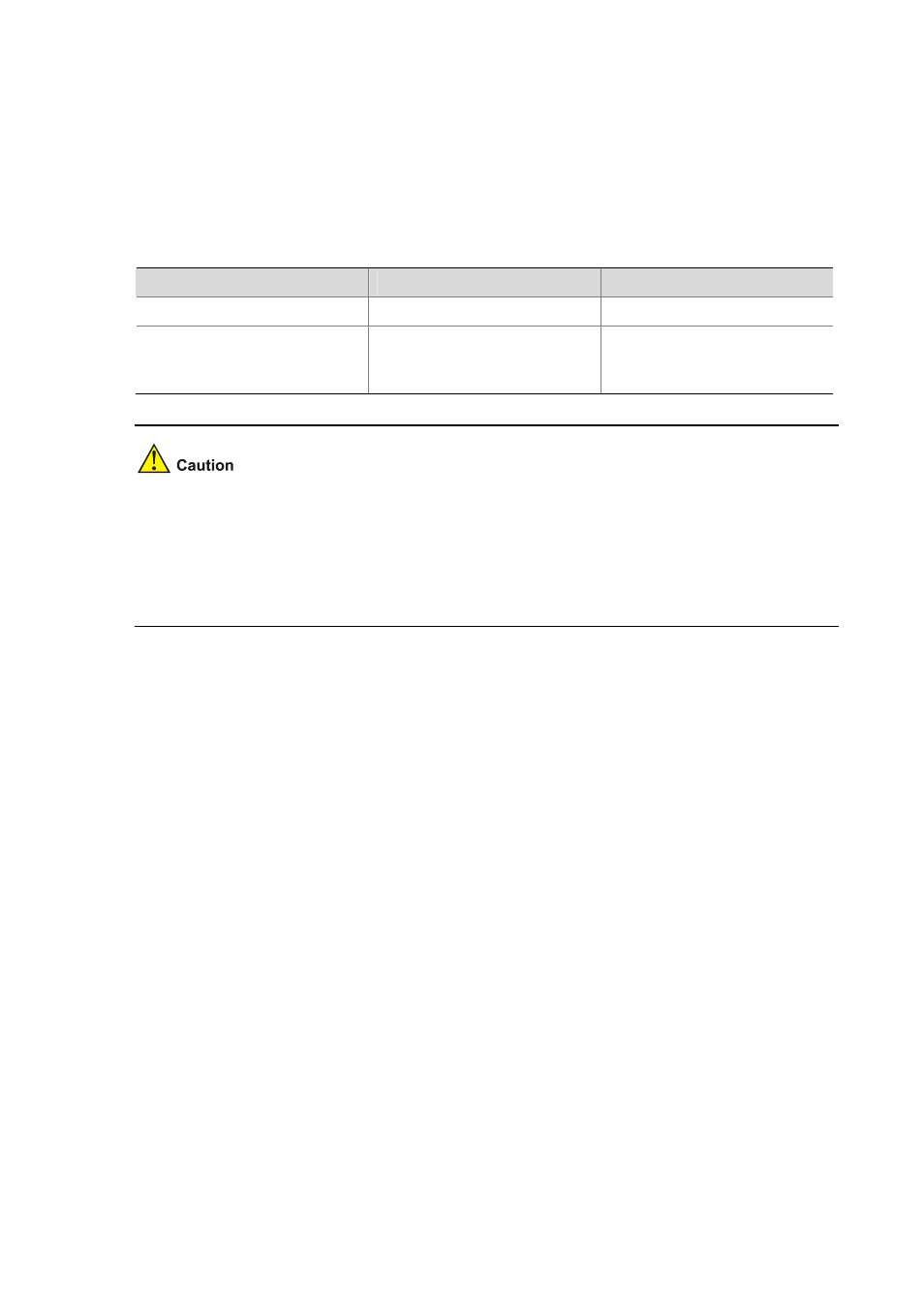Configuration procedure, Configuration example – H3C Technologies H3C WX3000 Series Unified Switches User Manual
Page 188

22-19
Configuring the Bridge Priority of the Current Device
Root bridges are selected according to the bridge priorities of the devices. You can make a specific
device be selected as a root bridge by setting a lower bridge priority for it. An MSTP-enabled device can
have different bridge priorities in different spanning tree instances.
Configuration procedure
Follow these steps to configure the bridge priority of the current device:
To do…
Use the command…
Remarks
Enter system view
system-view
—
Set the bridge priority for the
current device
stp
[ instance instance-id ]
priority priority
Required
The default bridge priority of a
device is 32,768.
z
Once you specify a device as the root bridge or a secondary root bridge by using the stp root
primary
or stp root secondary command, the bridge priority of the device cannot be configured
any more.
z
During the selection of the root bridge, if multiple devices have the same bridge priority, the one
with the smallest MAC address becomes the root bridge.
Configuration example
# Set the bridge priority of the current device to 4,096 in spanning tree instance 1.
<device> system-view
[device] stp instance 1 priority 4096
Configuring the Mode a Port Recognizes and Sends MSTP Packets
A port can be configured to recognize and send MSTP packets in the following modes.
z
Automatic mode. Ports in this mode determine the format of the MSTP packets to be sent
according to the format of the received packets.
z
Legacy mode. Ports in this mode recognize/send packets in legacy format.
z
802.1s mode. Ports in this mode recognize/send packets in dot1s format.
A port acts as follows according to the format of MSTP packets forwarded by a peer device or router.
When a port operates in the automatic mode:
z
The port automatically determines the format (legacy or dot1s) of received MSTP packets and then
determines the format of the packets to be sent accordingly, thus communicating with the peer
devices.
z
If the format of the received packets changes repeatedly, MSTP will shut down the corresponding
port to prevent network storm. A port shut down in this way can only be brought up by the network
administrator.
When a port operates in the legacy mode: